Rare Rides Personas: Powel Crosley Junior, Tiny Cars, Radio, and Baseball (Part II)

We return today to our coverage of the life and times of Powel Crosley Junior, the first subject in our new Rare Rides Personas series. Born in Cincinnati in 1886, Crosley was the son of a lawyer and the eldest of four. From an early age, he showed adeptness at engineering and technology but lacked an interest in the classroom learning behind it.
He and his brother Lewis built their first car - an EV wagon - at ages 12 and 10 to win a bet with their father. It was the first of many car ventures for Crosley, who was completely fascinated with the up-and-coming automobile. By age 21 he was raising funds to start a car company.
Crosley felt there was more potential in the automotive industry in neighboring Indiana than in Ohio, so he moved to Connersville to pursue his dream. Connersville was (and is) a town located in the middle of nowhere, over 60 miles southeast of Indianapolis. The year was 1907, and Crosley worked up his new car design in Connersville’s pastoral surroundings.
With an inline-six engine and a mid-high level of build quality and specification, the new car would cost a not inconsiderable $1,700 ($53,588 adj.) and target the entry-level luxury car market. It would be produced in Indiana by Crosley’s new venture, the Marathon Motor Company. Called the Marathon Six, Crosley had a working prototype ready to show investors very quickly. Sadly, it does not seem any pictures of the Six exist.
Despite the car firm having no saleable product, Crosley persuaded investors and customers to place orders. He raised over $10,000 ($315,224 adj.) in 1907, which was enough money to cover startup costs for the business. By the end of the year, it looked like the Six was going to enter production. But the economy had other plans.
The Panic of 1907 was a rapid, severe financial crisis that’s sometimes called Knickerbocker Crisis or Bankers’ Panic. In October 1907 the New York Stock Exchange fell about 50 percent over the previous year. The losses occurred over a three-week period and were ultimately caused by widespread consumer withdrawals from banks during a recession. People pulled their money out of the banks they didn’t trust, which sapped the bank’s liquidity and caused many to declare bankruptcy. This caused many businesses to fail simultaneously, as the banks called in the money they loaned early.
Marathon Motor Company was a victim of the Panic, as it relied entirely on car orders and small investors. Crosley was forced to shutter his first company, but would not be deterred from his car dream: He’d simply head in a different direction for a while. Said direction was to the northwest, as Indianapolis beckoned.
In the early 20th century Indianapolis was a hub of automobile manufacturing, almost to a Detroit level. Without any funding, Crosley was forced to get a job, and jobs with automobiles were plentiful in Indianapolis. He was hired by Fisher Automobile Company, a dealership that sold various cars of luxury provenance.
On Fisher’s showroom floor were Packards, Oldsmobiles, and even Stutz. The business was started by Carl Graham Fisher (1874-1939) as a bicycle shop in the late 1800s, but its owner realized luxury cars were the way forward. Fisher often performed stunts to promote its dealership, and he was one of the founding members of the Indianapolis Motor Speedway alongside Henry Clayton Stutz.
Crosley’s initial job at the dealership was delivering cars to their well-heeled owners, and performing mechanic work here and there. However, Crosley became friends with Fisher in short order, and he took the youth under his wing to teach him about publicity stunts and car sales and promotion. Eventually, Crosley moved a lot of metal for Fisher and participated in the dealership’s PR stunts. One of the most notable events was when Fisher rigged up a car to a hot air balloon with him in it. He landed the balloon car some distance away and then drove the car back to the dealership in Indianapolis to the amazement of the city.
Crosley worked at the dealership for a couple of years and spent much of his free time at the new Indianapolis Motor Speedway. With his newly minted promotional skills, he left Fisher and went to work in the promotions department for the Parry Automobile Company (1910-1912).
The only model Parry made was called the Pathfinder, but it failed to sell even with Crosley creating the promotions. Crosley wasn’t at Parry very long: He followed it up with a sales job for National Motor Vehicle Company (1900-1924), and another in advertising for Motor Vehicle, a trade magazine. All those jobs were within the span of roughly a year, as in 1910 he returned to Cincinnati.
The main reason for Crosley’s return home was his long-distance relationship with Gwendolyn Allen (1889-1939). Ms. Allen waited for Crosley to return to Cincinnati during his adventures in Connersville and Indianapolis, but patience had worn thin. The couple was married in Cincinnati on October 17, 1910.
After their marriage, the newlyweds saw each other only on weekends. Powel was back to Indiana where he lived in Muncie during the week selling cars, and Gwendolyn lived with her parents. Muncie was another short-lived location for Crosley, as he moved back to Cincinnati in 1911 when his daughter was born. Another child, a son, followed shortly thereafter.
At that point, Crosley’s automobile interests took a back seat to family life, and a job writing ad copy for local businesses around Cincinnati. He had short-term jobs at the Hermes Automobile Company and De Cross Cyclecar, the latter of which produced one example of a two-seat car where the passenger sat directly behind the driver. Another automotive job followed at L. Porter Smith and Brothers, but that firm also folded quickly.
For the next handful of years, Crosley focused on advertising since it paid the bills better than the small car companies that closed up shop almost instantly. But around him, the impact of the automobile continued to expand, and the Ford Model T (1908-1927) became an amazing sales success. By halfway through the T’s run in 1916, there were nearly a million examples trundling their way around the country.
And it wasn’t just Model Ts, the automobile’s growth was explosive. In 1907 when the Marathon Six was supposed to enter production, there were 1.65 cars in the US per 1,000 people. By 1910 that number increased to 5.07. By 1915 there were 24.77, and the following year it was 35.48. Crosley saw a great opportunity as car ownership became more widespread: All those people would need parts for their cars.
Parts and accessories allowed Crosley to participate in the automobile industry that he loved in a way that was financially sustainable. He found a partner by the name of Ira J. Cooper, and formed the American Automobile Accessory Company in 1916. Crosley was about to make himself a very wealthy Cincinnatian. We’ll pick up there next time.
[Image: Crosley]
Become a TTAC insider. Get the latest news, features, TTAC takes, and everything else that gets to the truth about cars first by subscribing to our newsletter.

Interested in lots of cars and their various historical contexts. Started writing articles for TTAC in late 2016, when my first posts were QOTDs. From there I started a few new series like Rare Rides, Buy/Drive/Burn, Abandoned History, and most recently Rare Rides Icons. Operating from a home base in Cincinnati, Ohio, a relative auto journalist dead zone. Many of my articles are prompted by something I'll see on social media that sparks my interest and causes me to research. Finding articles and information from the early days of the internet and beyond that covers the little details lost to time: trim packages, color and wheel choices, interior fabrics. Beyond those, I'm fascinated by automotive industry experiments, both failures and successes. Lately I've taken an interest in AI, and generating "what if" type images for car models long dead. Reincarnating a modern Toyota Paseo, Lincoln Mark IX, or Isuzu Trooper through a text prompt is fun. Fun to post them on Twitter too, and watch people overreact. To that end, the social media I use most is Twitter, @CoreyLewis86. I also contribute pieces for Forbes Wheels and Forbes Home.
More by Corey Lewis
Latest Car Reviews
Read moreLatest Product Reviews
Read moreRecent Comments
- ToolGuy "I have my stance -- I won't prejudice the commentariat by sharing it."• Like Tim, I have my opinion and it is perfect and above reproach (as long as I keep it to myself). I would hate to share it with the world and risk having someone critique it. LOL.
- SCE to AUX Sure, give them everything they want, and more. Let them decide how long they keep their jobs and their plant, until both go away.
- SCE to AUX Range only matters if you need more of it - just like towing capacity in trucks.I have a short-range EV and still manage to put 1000 miles/month on it, because the car is perfectly suited to my use case.There is no such thing as one-size-fits all with vehicles.
- Doug brockman There will be many many people living in apartments without dedicated charging facilities in future who will need personal vehicles to get to work and school and for whom mass transit will be an annoying inconvenience
- Jeff Self driving cars are not ready for prime time.



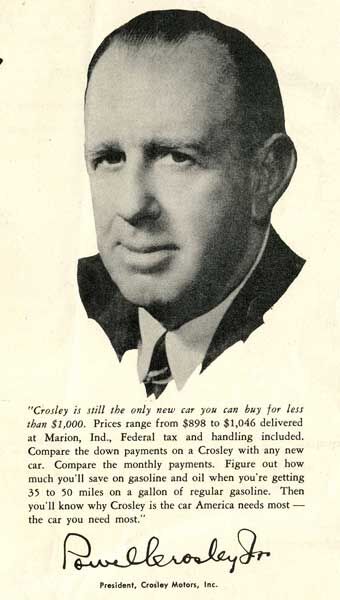















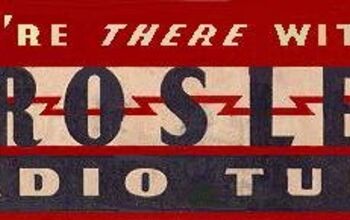
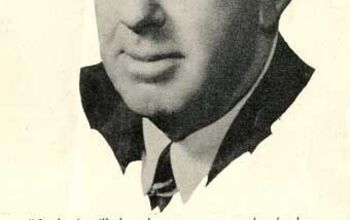
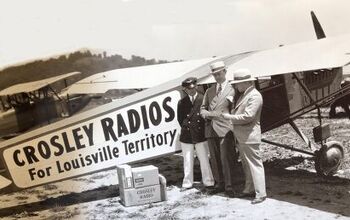
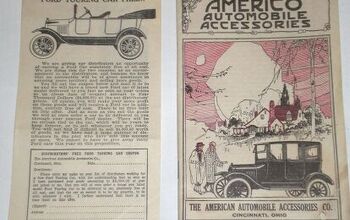
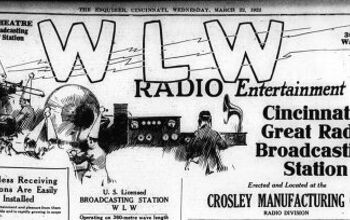










Comments
Join the conversation
Corey: As a native SW Ohioan, Powel Crosley, Jr. has always been an object of fascination for me. While you're correct that he wanted most of all to build cars, the story of the company he created with his brother Lewis, The Crosley Corporation, is totally fascinating. In the early 20's, Crosley was the nation's leading manufacturer of radio receivers. In the 1930's, working from an idea brought to him by one of his engineers, Crosley pioneered the first refrigerator with shelves in the door (called, of course, the "Shelvador"). He was the first to sell modular steel kitchen cabinets (made for him by Auburn in Connersville). He brought out the "IcyBall" which was a non-electric refrigerator. He also pioneered in radio broadcasting with WLW Radio in Cincinnati (wags said the calls stood for either "Whole Lotta Watts" or "World's Lowest Wages"). WLW was one of the first 50,000 watt AM stations and in 1934, began transmitting with 500,000 watts - the most powerful station in the world, which Mr. Crosley dubbed "The Nation's Station". Crosley was early into TV as well. The reason the Crosley operation died was because Mr. Crosley sold the company in 1945 to the AVCO Corporation, which had no idea how to market consumer goods. Crosley radios and TVs were always built "to a price" and the price was low. But AVCO made the products too cheaply and their styling was a bit off the wall in some cases. The major parts of the Crosley empire died in 1957 when AVCO pulled the plug. For the full story of Crosley, read "Crosley: Two Brothers and a Business Empire That Transformed the Nation" by Rutsy McClure (a grandson of Lewis Crosley), David Stern and Michael A. Banks, Cincinnati: Clerisy Press, ISBN-13: 978-1-57860-291-9.
Good deal! Thanks!